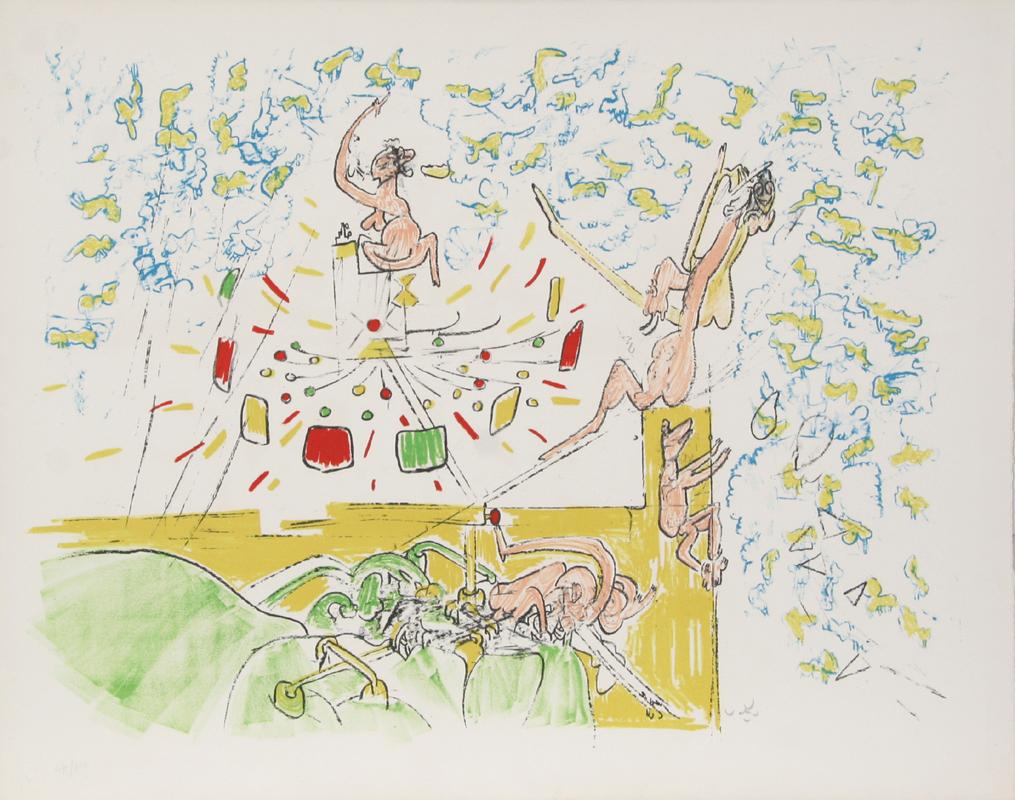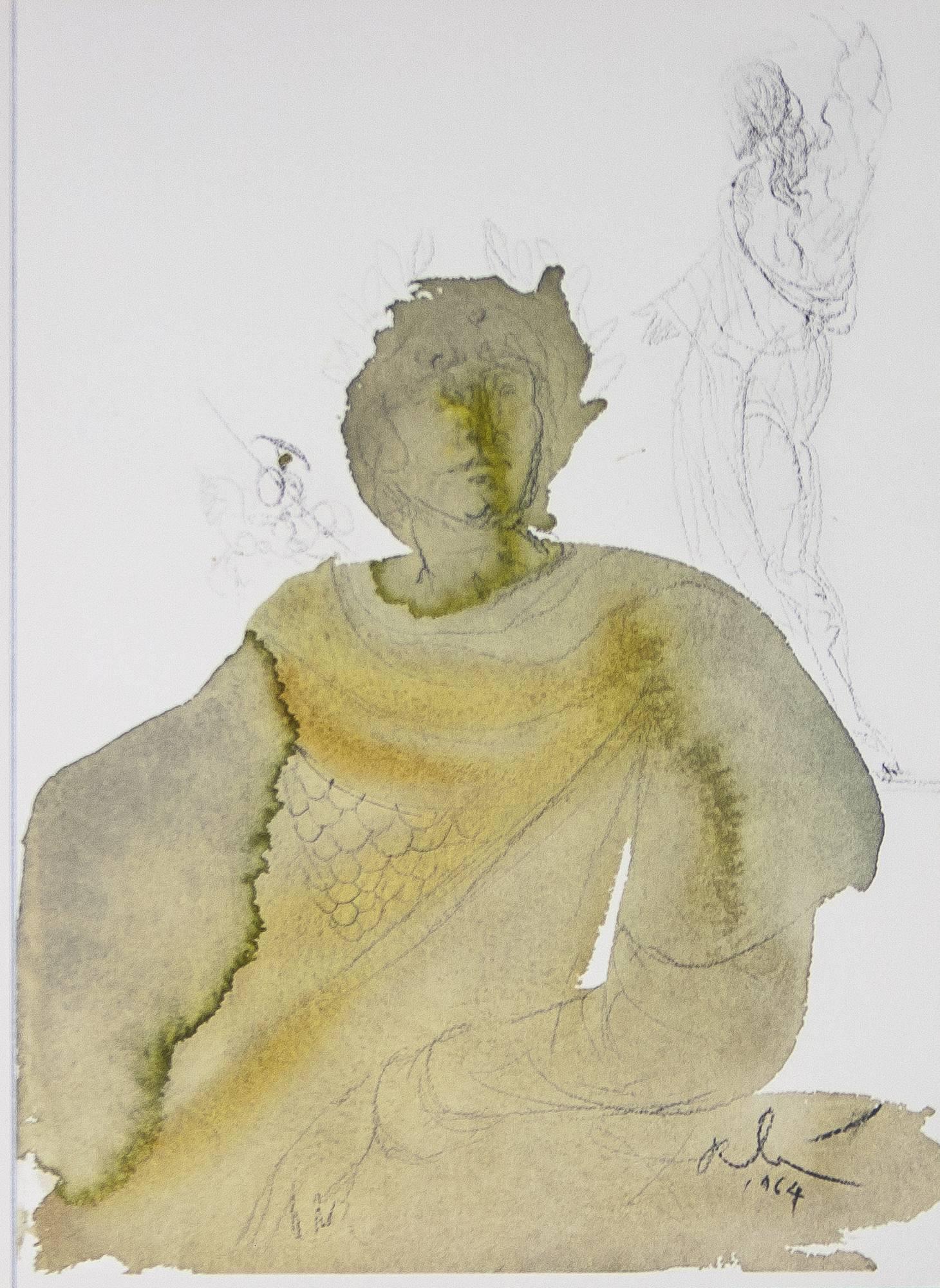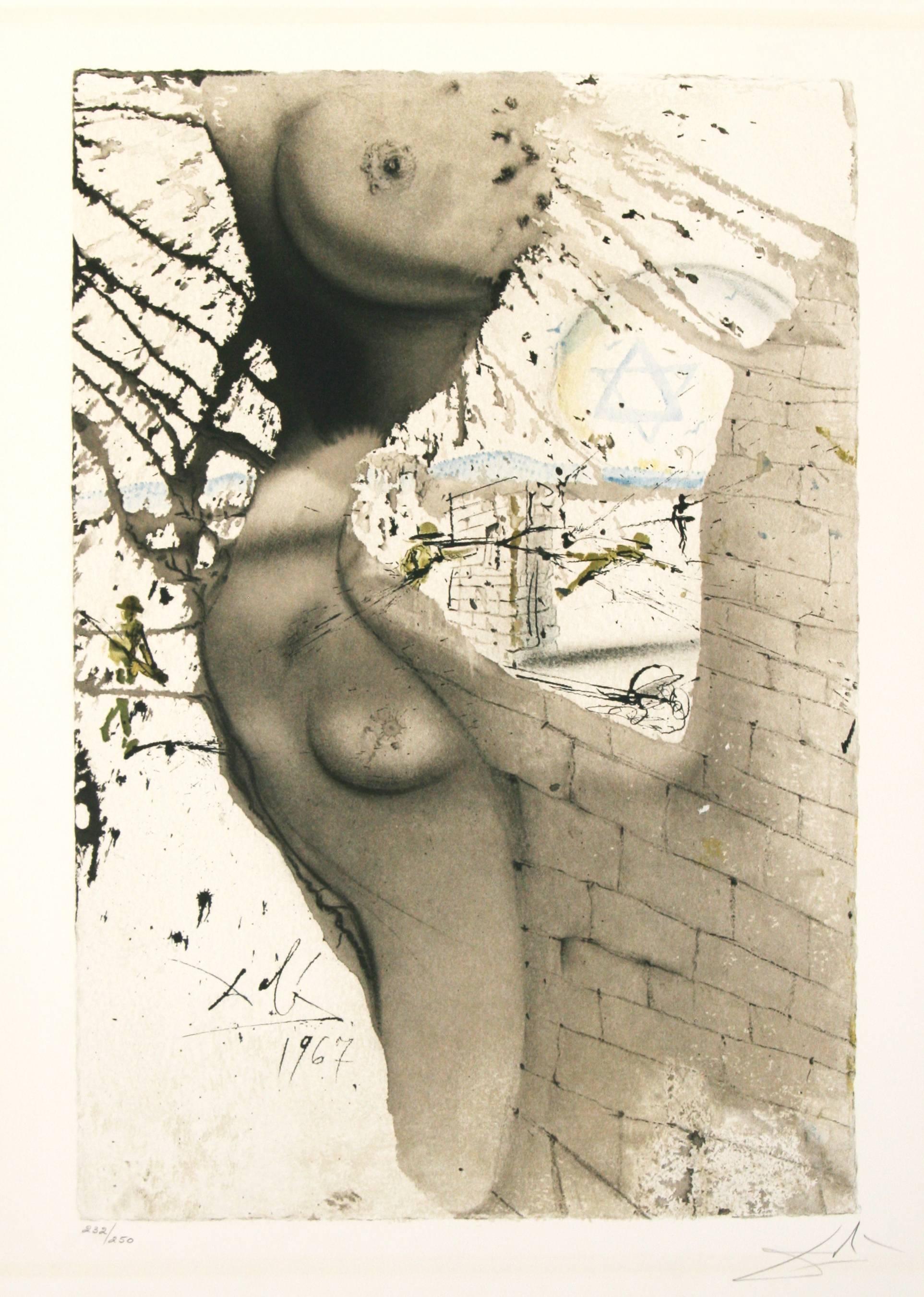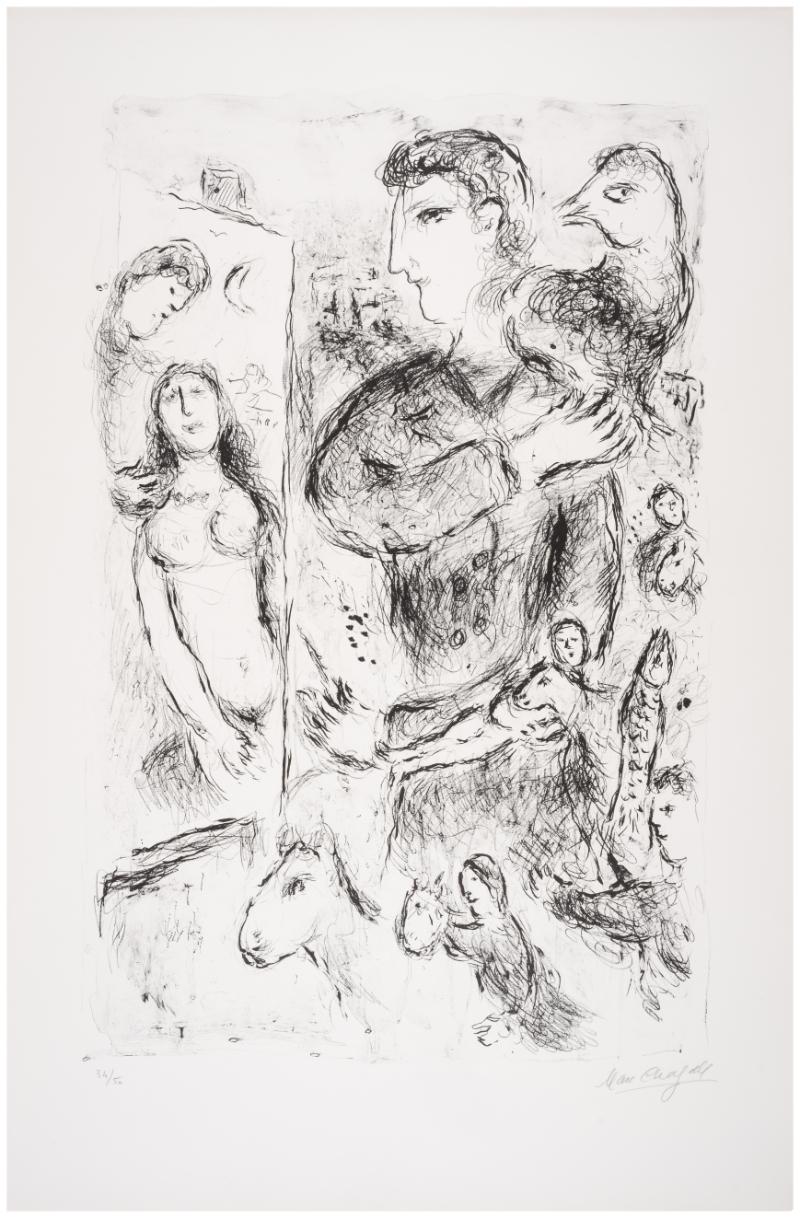Marc Chagall20th century color lithograph nude figures1960
1960
About the Item
- Creator:Marc Chagall (1887 - 1985, French)
- Creation Year:1960
- Dimensions:Height: 25.5 in (64.77 cm)Width: 21.5 in (54.61 cm)
- Medium:
- Movement & Style:
- Period:
- Condition:
- Gallery Location:Milwaukee, WI
- Reference Number:
Marc Chagall
Described by art critic Robert Hughes as "the quintessential Jewish artist of the twentieth century," the Russian-French modernist Marc Chagall worked in nearly every artistic medium. Influenced by Symbolism, Fauvism, Cubism and Surrealism, he developed his own distinctive style, combining avant-garde techniques and motifs with elements drawn from Eastern European Jewish folk art.
Born Moishe Segal in 1887, in Belarus (then part of the Russian empire), Chagall is often celebrated for his figurative paintings, but he also produced stained-glass windows for the cathedrals of Reims and Metz, in France; for the United Nations, in New York; and for the Hadassah Hospital in Jerusalem, as well as book illustrations, stage sets, ceramics, tapestries and fine-art prints. Characterized by a bold color palette and whimsical imagery, his works are often narrative, depicting small-village scenes and quotidian moments of peasant life, as in his late painting The Flight into Egypt from 1980.
Before World War I, Chagall traveled between St. Petersburg, Paris and Berlin. When the conflict broke out, he returned to Soviet-occupied Belarus, where he founded the Vitebsk Arts College before leaving again for Paris in 1922. He fled to the United States during World War II but in 1947 returned to France, where he spent the rest of his life. His peripatetic career left its mark on his style, which was distinctly international, incorporating elements from each of the cultures he experienced.
Marc Chagall remains one of the past century’s most respected talents — find his art on 1stDibs.
- ShippingRetrieving quote...Ships From: Milwaukee, WI
- Return PolicyA return for this item may be initiated within 14 days of delivery.
- "Venise en Fleurs" from "Je Reve, " Surrealist Lithograph signed by Andre MassonBy André MassonLocated in Milwaukee, WI"Venise en Fleurs" is an original color lithograph by Andre Masson. This piece is from the "Je Reve" (I Dream) portfolio of 1975. The edition number, written lower left, is H.C. XXV/...Category
1970s Surrealist Figurative Prints
MaterialsLithograph
- "Paradis (Paradise), M 232/255, " an Original Color Lithograph by Marc ChagallBy Marc ChagallLocated in Milwaukee, WI"Paradis (Paradise), M 232/255" is an original lithograph by Marc Chagall. his original color lithograph was designed for and printed by VERVE for the book “Dessins pour La Bible." I...Category
1960s Surrealist Figurative Prints
MaterialsLithograph
- 20th century color lithograph man camel woman figures red yellowBy Marc ChagallLocated in Milwaukee, WI"Rachel Dérobe les Idoles de son Père (Rachel Hides her Father's Idols), M 242/265" is an original lithograph by Marc Chagall. This original color lithograph was designed for and pri...Category
1960s Surrealist Figurative Prints
MaterialsLithograph
- 20th century color lithograph three women figures red sun plants animalBy Marc ChagallLocated in Milwaukee, WI"Noémie et ses Belles-Filles (Naomi and her Daughters-in-law), M 245/268" is an original Lithograph by Marc Chagall. This original color lithograph was designed for and printed by VE...Category
1960s Surrealist Figurative Prints
MaterialsLithograph
- "Derièrre le Miroir, Couverture: La Peintre devant le Village I" Original LithoBy Marc ChagallLocated in Milwaukee, WI"Derièrre le Miroir, Couverture: La Peintre devant le Village I (Cover of Dèrriere le Miroir No. 182: The Artist at the Village I) M 603a" is an ...Category
1960s Surrealist Prints and Multiples
MaterialsLithograph
- "Satan" from "Je Reve" portfolio, Surrealist Lithograph, SignedBy André MassonLocated in Milwaukee, WI"Satan" is an original color lithograph by Andre Masson. This piece is from the "Je Reve" (I Dream) portfolio of 1975. The edition number, written lower left, is H.C. XXV/XXV. The ar...Category
1970s Surrealist Figurative Prints
MaterialsPaper, Lithograph
- Elijah by a Whirlwind on a Chariot of Fire from Biblia Sacra by Salvador DaliBy Salvador DalíLocated in Paonia, COElijah by a Whirlwind on a Chariot of Fire by Salvador Dali from Biblia Sacra is a colored lithograph from the gouache original on heavy rag paper from Salvador Dali’s five vol...Category
1960s Surrealist Abstract Prints
MaterialsLithograph
- Into the Grave of of Elish from Biblia Sacra by Salvador DaliBy Salvador DalíLocated in Paonia, COInto the Grave of Elish is a colored lithograph from the gouache original on heavy rag paper from Salvador Dali’s five volume Biblia Sacra Suite published in Rome by Rizzoli , 1...Category
1960s Surrealist Abstract Prints
MaterialsLithograph
- Raising Lazarus from Biblia Sacra by Salvador DaliBy Salvador DalíLocated in Paonia, CORaising Lazarus by Salvador Dali from Biblia Sacra is a colored lithograph from the gouache original on heavy rag paper from Salvador Dali’s five volume Biblia Sacra Suite pub...Category
1960s Surrealist Abstract Prints
MaterialsLithograph
- The Spirit is Willing But the Flesh is Not by Salvador Dali from Biblia SacraBy Salvador DalíLocated in Paonia, COThe Spirit is Willing But the Flesh is Not by Salvador Dali from Biblia Sacra is a colored lithograph from the gouache original on heavy rag paper from Salvador Dali’s five volume...Category
1960s Surrealist Abstract Prints
MaterialsLithograph
- Science Fiction - Lithograph and etching by Sergio Sarri - 1978By Sergio SarriLocated in Roma, ITScience Fiction is an artwork realized by Sergio Sarri in 1978 . Colored lithograph and etching on paper. Hand-signed and dated by the artist on the lower right. Numbered on lower left. Edition 64/180. Good conditions, except for some very light folds along the margins. This contemporary artwork represents a surreal composition where the artist, like in most of his artworks, refers to not only avant-garde art, but also elements from languages that are considered "minor", such as comic strips, illustrations, and cinema genre. Sarri also enjoys collecting advertising...Category
1970s Surrealist Figurative Prints
MaterialsEtching, Lithograph
- Untitled - Lithograph by Wifredo Lam - 1974By Wifredo LamLocated in Roma, ITUntitled is an artwork realized by the Cuban Surrealist artist Wifredo Lam (1902-1982). This is a color lithograph on wove paper, properly edited b...Category
1970s Surrealist Figurative Prints
MaterialsLithograph




